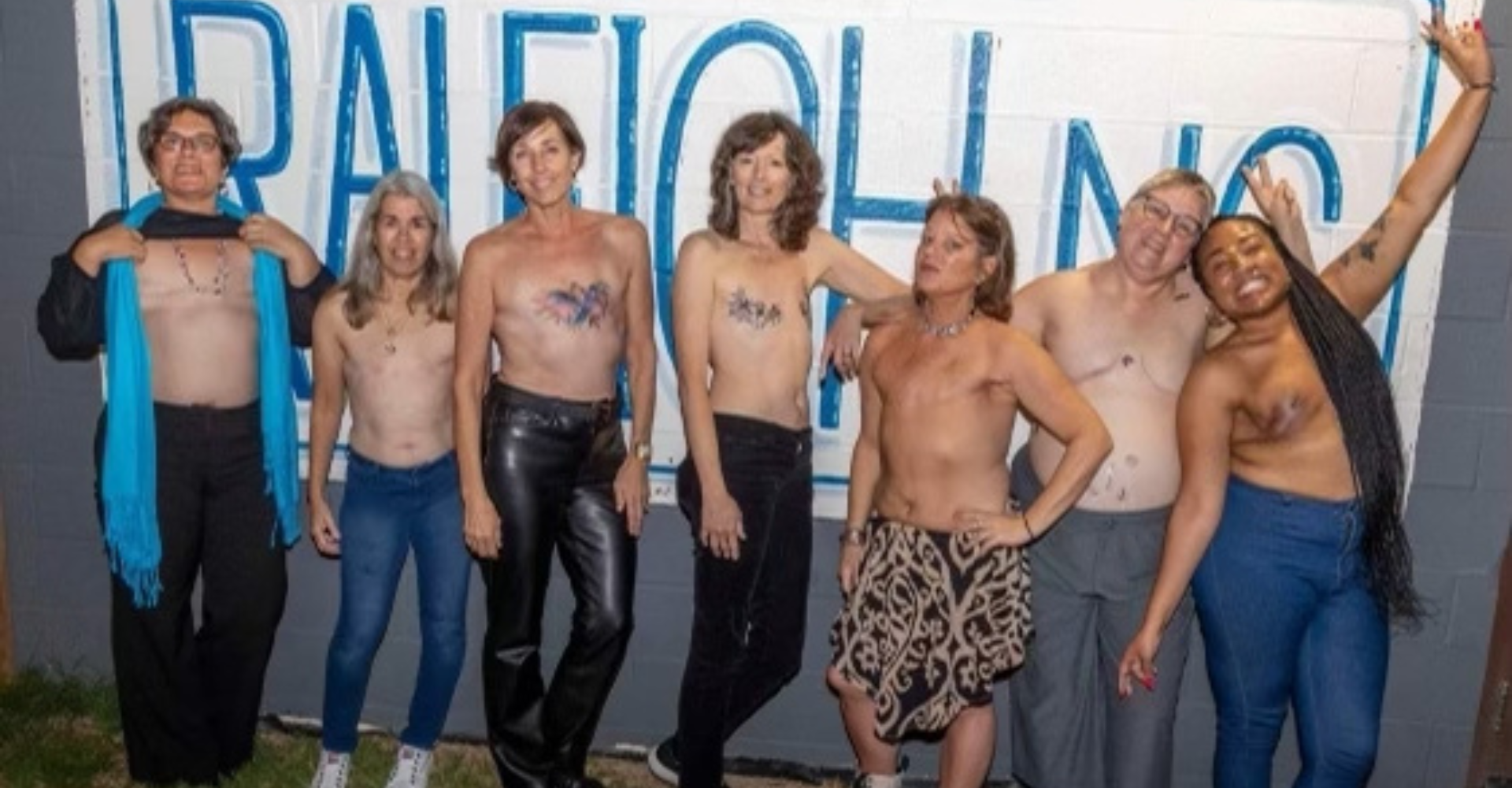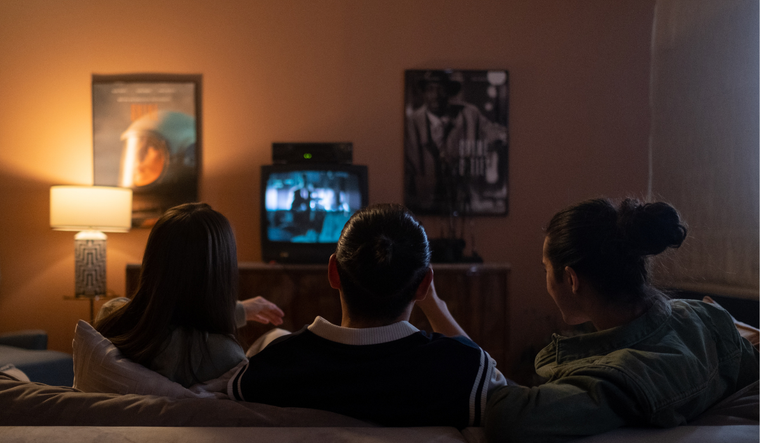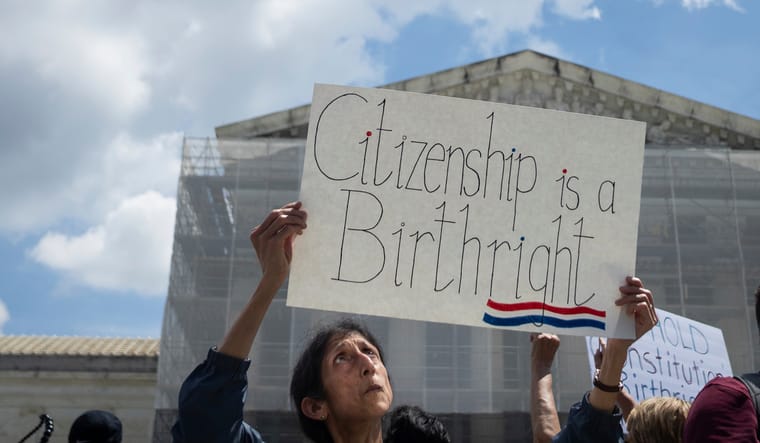This Breast Cancer Survivor Is Advocating for Women Who Have Less Than 2 Breasts to Love Their Bodies
The image inspired us at The Sunday Paper: Women shirtless with no breasts stood arm-to-arm, their faces covered in pride. They were gathered to bring awareness around the loss of breasts to cancer treatment and to normalize going flat-chested after mastectomy—a procedure called Aesthetic Flat Closure (AFC).
One vocal woman behind this advocacy is Renee Ridgeley. A breast cancer survivor and co-founder of the visibility campaign Stand Tall AFC, Ridgeley is walking, speaking, rallying, and informing across the country—and she’s inspiring people along the way. She wants every person to know about AFC and that it’s a valid option after mastectomy. The Sunday Paper chatted with Ridgeley this week to learn more.
A Conversation with Renee Ridgeley
Approximately 200,000 women in the U.S. have mastectomies each year and about half of them choose Aesthetic Flat Closure (AFC). Walk us through AFC and how it came to be.
While there are no specific numbers, it is roughly half. It is great for the breast cancer community to have this medical term, Aesthetic Flat Closure, which was only introduced in 2020. An important advocate behind this is Kim Bowles, who founded the non-profit, Not Putting on a Shirt, and engaged with the medical community and with the National Cancer Institute to help create this specific term which is defined as a smooth, flat chest after mastectomy. During my own cancer journey in 2016, we didn’t have this term. There was only reconstruction or “no reconstruction.”
'No reconstruction' is this abstract term and it’s not scientific. A surgeon might think one thing and a patient may think another. You had women that were thinking, I want to be done. I don’t want to reconstruct breast mounds. I want to be smooth-flat because that's what will feel better if I want to wear a bra and breast form, or that's what will look better under a T-shirt or tighter clothing if I don't want to wear a breast form and just go flat.
So that’s what women often thought, yet many surgeons were leaving women with lots of skin folds, kind of lumpy and bumpy. They thought, if a woman doesn’t want breast mounds rebuilt, she doesn't care what she looks like. No, we care what we look like! And that's why the “Aesthetic” in front of “Flat Closure” is important. So thankfully we now have this wonderful terminology that the surgeon and patient both know what it means.
There is a strong element of body positivity and a redefinition of beauty imbued in your and others’ advocacy for AFC. What do you hope people embrace from this?
There are two ways to approach this answer. One is that there’s a cultural movement to embrace different bodies—of different shapes, sizes, and skin tones as beautiful. The younger generations are finding beauty in diversity as opposed to trying to fit into a cookie-cutter. For many women who have less than two breasts, we think our bodies can be beautiful and because there are many women with one breast after cancer, there’s its own interesting beauty of asymmetry.
So we’re saying that we like what Aesthetics Flat Closure looks like. Do we miss our native breasts? Of course. But we had to say goodbye to them. A boob is a small price to pay for more time on this planet. There are so many other things that must be removed for cancers or diseases that leave people incapacitated. For us, our clothes might fit differently. We may have to rework intimacy and our ideas around our body image. But we are resilient. Women are strong and resilient. We can do this. And so that's one area where body positivity has come in.
The other reason for our very public advocacy is that women are still being shamed for choosing to not reconstruct and to go flat. As much as I hate to say it, some medical providers tell women they won’t be attractive or that they’ll hate their bodies for not choosing to look the way they're quote-on-quote “supposed” to. I've been traveling on this campaign and a woman in her late forties told me after chemo and radiation that she had told her surgeon, ‘I’m really tired. I want to get back to my life. I want to go flat.’ When she informed her doctor of this, he asked her to pull down her face mask and then remarked that she was a beautiful woman and, ‘It would be a shame not to reconstruct.’ This happens all too often.
I don’t believe this is the case for most surgeons, but there’s a percentage that needs to be updated. These surgeons are trying to do their best for us, and they work to save our lives, but they either aren’t in touch with a present-day culture or they're putting their subjectivity on their patients instead of asking them: What's important to you?
Is there a male-gaze aspect to this shame?
Mostly I hear from women that their partners support them in their wanting to go flat. Occasionally I do hear of a woman whose husband or wife really wants them to reconstruct, but this is rare. Mostly the partners I’ve come across want their loved ones alive and feeling good and healthy.
You advocate all over the country to bring more awareness to AFC and embolden women to choose what’s right for them. How can the greater population support your community?
For anyone working in the healthcare industry, I would ask them to prioritize our health. Reconstruction is often pitched as easy, but that’s not true. It can be a long process with more time recovering and feeling like a patient instead of returning to what’s important: life. Duke University has been amazing in its support of Aesthetic Flat Closure and Not Putting on a Shirt. Even women who do choose to reconstruct support our work to get AFC presented equally on par with reconstruction options. It could be an option for them down the road if they encounter complications.
For our supporters and, with the Stand Tall AFC campaign, we had more than 700 people walk and the majority are not breast cancer patients or are not flat. Wow. These are friends, families, loved ones, and people who just heard about it. So come on over. Stand by us. Show that we are loved. Doing this helps to destigmatize bodies after cancer. It is tangible and powerful to see all the people walking by us on our walks. To look at all those people with women who are flat and see how we’re loved. We’re mothers, sisters, and wives—and community support is so important to us.
Renee Ridgeley is an actress and advocate. You can learn more about her visual campaign, Stand Tall AFC, at standtallafc.org and @standtallafc. You can follow her at @reneeridgeley
Question from the editor: Do you have any questions or comments regarding ways to support the AFC and less-than-two-breasts community? We'd love to hear from you below.
Please note that we may receive affiliate commissions from the sales of linked products.



